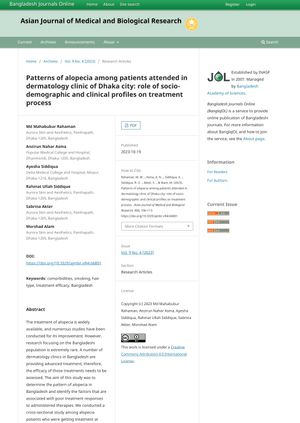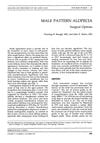Patterns of Alopecia Among Patients in a Dermatology Clinic of Dhaka City: Role of Socio-Demographic and Clinical Profiles on Treatment Process
October 2023
in “
Asian Journal of Medical and Biological Research
”

TLDR The conclusion is that the current treatment for hair loss works well for most patients, but better results could be achieved by also focusing on patients' other health issues and habits.
The study "Patterns of alopecia among patients attended in dermatology clinic of Dhaka city: role of socio-demographic and clinical profiles on treatment process" conducted a cross-sectional analysis of alopecia patients in Bangladesh, focusing on treatment efficacy. The most common type of alopecia was male pattern baldness (stage-2) at 43.6%, followed by male pattern baldness (stage-3) at 18.8% and female pattern hair loss (stage-2) at 13.9%. Treatment efficacy was good for 46.5% of patients, medium for 42.56%, and poor for 10.9%. Factors negatively impacting treatment efficacy included oily hair (P=0.018), presence of chronic disease, stress (P<0.05), and smoking. The study concluded that while the ongoing treatment has overall excellent efficacy, attention should be given to the comorbidities and habits of patients to improve the treatment outcome.



